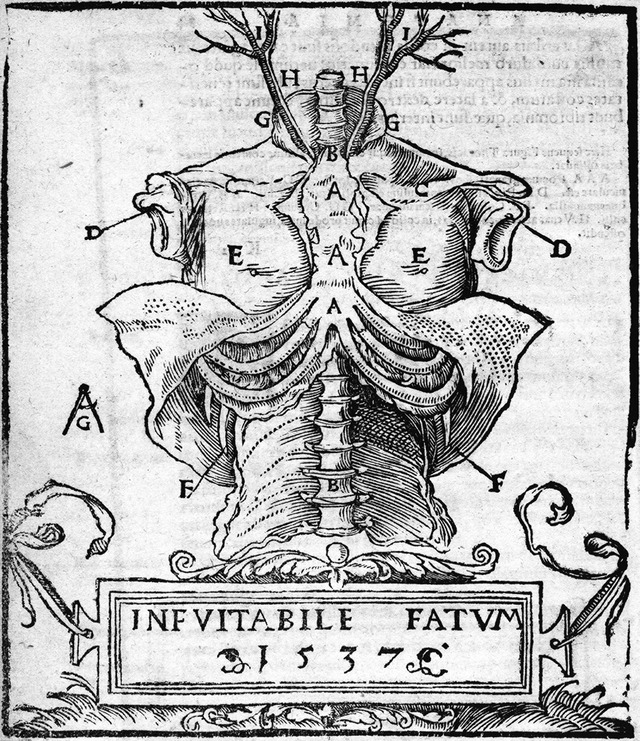Top Qs
Timeline
Chat
Perspective
Alessandra Giliani
Italian anatomist From Wikipedia, the free encyclopedia
Remove ads
Alessandra Giliani (1307 – 26 March 1326) is known as the first woman to be recorded in historical documents as practicing anatomy and pathology.[1] She's reputed to have worked as a prosector, preparing corpses for anatomical study, under the famed anatomist Mondino de Luzzi at the University of Bologna;[1][2] although all evidence of her work has been either lost or destroyed.[2] Due to the lack of records on Giliani (as well as on other Medieval women popularly connected to the University of Bologna), a number of modern historians, such as Paula Findlan, argue that Giliani was invented by notorious forger and pseudo-historian Alessandro Macchiavelli in the 18th Century; indeed, doubts had been expressed as early as 1857 in Michele Medici's History of the Bolognese School of Anatomy.[3][4] If real, however, Giliani's purported contributions to the study of anatomy would be significant.[1][2][5]
You can help expand this article with text translated from the corresponding article in Italian. (August 2014) Click [show] for important translation instructions.
|
Remove ads
Early life and education
Summarize
Perspective
Giliani is believed to have been born in 1307, in San Giovanni in Persiceto, in the Italian province of Emilia-Romagna.[1] She is said to have served as an assistant to de' Liuizzi specializing in dissection demonstrations as a prosector, an anatomist who prepares corpses for dissection in academic settings.[1][2] Given her reported death at the age of 19, her involvement in anatomical studies would have occurred during her late teens.[1][2] In 1316, de' Liuizzi published a seminal text on the subject entitled, Anathomia corporis humani.[6] The earliest edition of the work was printed in Padua between 1475 and 1478.[7]

Evidence of Giliani's activities at the University of Bologna is scarce, as there are no contemporary records documenting her life. work, or graduation.[2] The reasons for this are still being debated. Some historians speculate that she may have disguised herself as a man to circumvent legal restrictions against women in medicine and academia.[2] A 1493 illustration of Mondino de Luzzi's anatomy lessons depict him accompanied by an androgynous young person, whom some believe to be a female dressed in men's clothing, and thus might represent Giliani.[2] There is also speculation that records of her work were destroyed by the church after her death, removing all traces of her accomplishments.[2]
Remove ads
Research and Career
Despite the aura of mystery surrounding her existence, Giliani is credited with being a brilliant prosector, preparing bodies for anatomical analysis.[1][2] She reportedly developed a method of injecting colored dye, possibly made from melted wax, into the vessels of cadavers to better visualize their structure.[1] This technique provided a more detailed understanding of blood circulation, prefiguring William Harvey's work 300 years later.[2][5]
During Giliani's time, medical understanding of blood circulation was limited. Many researchers believed that blood diffused from the right to left ventricle through "invisible pores in the septum."[8] If the accounts of Giliani's work are accurate, she may have helped document the circulatory pathways centuries before Harvey formally described the heart as a pump circulating blood throughout the body.[2]
Remove ads
Personal life
According to some accounts, Giliani may have been engaged to Otto Angenius before her death at the age of 19.[1][2]
Legacy
Due to there being no official records of Giliani at the University of Bologna or elsewhere, there is today an ongoing debate regarding both Giliani's achievements and existence. Some scholars consider her to be a fiction invented in the 18th Century by Alessandro Machiavelli (1693–1766) as a way of promoting the case for women students at Bologna.[9][10] Others hold that the participation of a woman in anatomy at that time may have caused the authorities such offence that Giliani was edited out of history.[6]
Barbara Quick's novel, A Golden Web, published by HarperTeen in 2010, is historical fiction based on the life and times of Alessandra Giliani.[2][11] Giliani is among the 1,038 women honored in Judy Chicago's renowned art installation The Dinner Party.[4]
Remove ads
References
Sources
Wikiwand - on
Seamless Wikipedia browsing. On steroids.
Remove ads

